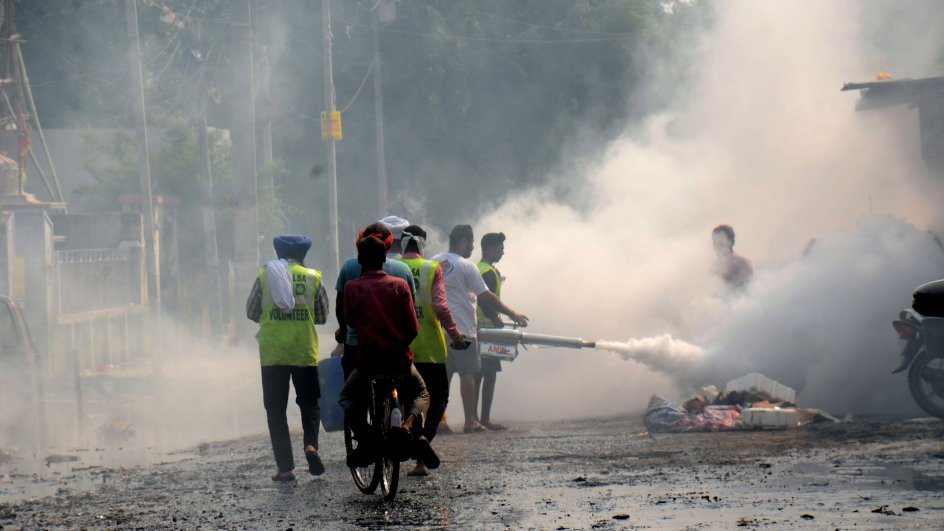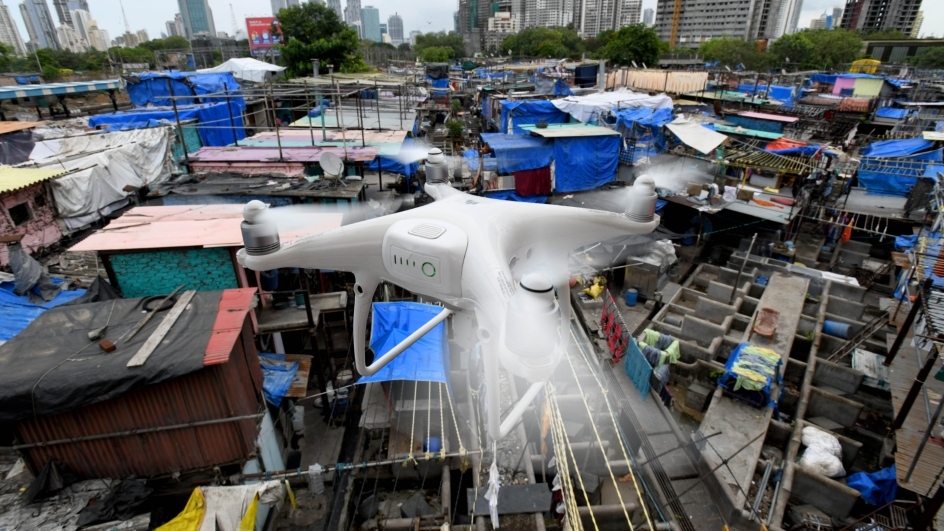#WorldMosquitoDay: Prevalence and Facts About Malaria Disease Causing Mosquitoes 🦟
weather.com/en-IN/india/he…
(Image 1 - C Suresh Kumar/BCCL, Chennai )
(Image 2 -KM Sharma/BCCL, Patna)
(Image 3 - Sanjay Hadkar/TOI, BCCL/Mumbai )
(Image 4 - BCCL)



weather.com/en-IN/india/he…
(Image 1 - C Suresh Kumar/BCCL, Chennai )
(Image 2 -KM Sharma/BCCL, Patna)
(Image 3 - Sanjay Hadkar/TOI, BCCL/Mumbai )
(Image 4 - BCCL)




In the South East Asia region, India accounts for 58% of the reported case load. As per the National Vector Borne Disease Control Programme (NVBDCP), India has reported 62,129 #malaria cases in 2020 till June. In 2019, the country reported 3.3 lakh confirmed cases.
The government of India has set a target to eliminate malaria disease by 2030.
(Image credit :N Kanaka / BCCL, Visakhapatnam)
#StopTheSpread #Mosquitoes #WorldMosquitoDay🦟
(Image credit :N Kanaka / BCCL, Visakhapatnam)
#StopTheSpread #Mosquitoes #WorldMosquitoDay🦟

The non-profit organisation, @MalariaNoMore has also launched a new national campaign ‘Bite ko mat lo lite’ this year. The campaign has been launched across 21 states of India and aims to educate people, to take necessary precautions against mosquito bites.
@malarianomoreIN
@malarianomoreIN
Transmission of mosquito-borne disease
#Mosquitoes are the most common vectors that transmit several diseases like Zika virus, West Nile virus, Chikungunya virus, dengue, and malaria.
#Mosquitoes are the most common vectors that transmit several diseases like Zika virus, West Nile virus, Chikungunya virus, dengue, and malaria.

Worldwide, nearly 3,500 species of #mosquitoes have been identified, while in India alone, there are over 400 species, and almost all of them carry diseases.
#StopTheSpread #Mosquitoes #WorldMosquitoDay🦟
#StopTheSpread #Mosquitoes #WorldMosquitoDay🦟
#Malaria is typically caused by the parasite called #Plasmodium carried by female Anopheles mosquitoes. These vectors transmit the disease mainly by biting a person.
(Image credit: C Suresh Kumar/BCCL, Chennai)
(Image credit: C Suresh Kumar/BCCL, Chennai)

The cases of malaria shoot up sharply during the #monsoon season, as mosquitoes have enough sources to breed and expand their population within a very short time.
#StopTheSpread #Mosquitoes #WorldMosquitoDay🦟
#StopTheSpread #Mosquitoes #WorldMosquitoDay🦟
A #malaria attack goes through 3 stages in the human body—the cold stage, the hot stage, and the sweating stage. The most common symptoms of the disease include headaches, vomiting and nausea, chills, sweats and body aches.
(Image credit: Aniruddhasingh Dinore / BCCL, Nagpur)
(Image credit: Aniruddhasingh Dinore / BCCL, Nagpur)

In most cases, the disease can be easily treated and therefore, upon experiencing the symptoms, one must get tested immediately.
#StopTheSpread #Mosquitoes #WorldMosquitoDay🦟
#StopTheSpread #Mosquitoes #WorldMosquitoDay🦟
Less-known facts about mosquitoes🦟
- Female mosquitoes produce 100-300 eggs at a time on a still-water surface and these hatch within 48 hours. The larvae grow into adult mosquitoes within two weeks.
- Female mosquitoes produce 100-300 eggs at a time on a still-water surface and these hatch within 48 hours. The larvae grow into adult mosquitoes within two weeks.
#DidYouKnow | A female mosquito can produce eggs up to 10 times in her life span of just two months.
(Image credit: SL Shanth Kumar)
#StopTheSpread #Mosquitoes #WorldMosquitoDay🦟
(Image credit: SL Shanth Kumar)
#StopTheSpread #Mosquitoes #WorldMosquitoDay🦟

-The world #malaria is a combination of two Italian words—mal and aria—this means bad air. While the world mosquito is derived from Spanish, which means ‘little fly’.
#StopTheSpread #Mosquitoes #WorldMosquitoDay🦟
#StopTheSpread #Mosquitoes #WorldMosquitoDay🦟
-Only female #Anopheles mosquitoes can cause malaria, since male mosquitoes do not bite animals. Anopheles mosquitoes need human blood to enable maturation of their eggs.
#StopTheSpread #Mosquitoes #WorldMosquitoDay🦟
#StopTheSpread #Mosquitoes #WorldMosquitoDay🦟
-Plasmodium falciparum (Pf) is the deadliest parasite among the five known types of Plasmodium—a type of protozoa—which infect humans and cause malaria.
#StopTheSpread #Mosquitoes #WorldMosquitoDay🦟
#StopTheSpread #Mosquitoes #WorldMosquitoDay🦟
Pf has the capability to totally invade and destroy the red blood cells in the liver. P. vivax is another one that poses a very high threat.
#StopTheSpread #Mosquitoes #WorldMosquitoDay🦟
#StopTheSpread #Mosquitoes #WorldMosquitoDay🦟
- The first known remedy of malaria dates back to the early 1600s. It was derived from the bark of the cinchona tree and is known as quinine.
#StopTheSpread #Mosquitoes #WorldMosquitoDay🦟
#StopTheSpread #Mosquitoes #WorldMosquitoDay🦟
- #Mosquitoes are said to be responsible for the death of anywhere between 5 to 50 percent of approximately 108 billion people who have ever lived on Earth. Even today, these tiny insects claim more than 7,00,000 lives every year.
#StopTheSpread #Mosquitoes #WorldMosquitoDay🦟
#StopTheSpread #Mosquitoes #WorldMosquitoDay🦟
-Vector-borne diseases account for more than 17% of all infectious diseases. They can be caused by either parasites, bacteria or viruses and spread through vectors like mosquitoes and fleas.
#StopTheSpread #Mosquitoes #WorldMosquitoDay🦟
#StopTheSpread #Mosquitoes #WorldMosquitoDay🦟
-Way back in 1852, the disease caused an epidemic in West Bengal, as per the Indian Journal of Medical Research (IJMR).
#StopTheSpread #Mosquitoes #WorldMosquitoDay🦟
#StopTheSpread #Mosquitoes #WorldMosquitoDay🦟
As per the Malaria Institute of India, about 100 million people suffered from malaria in India in 1935, and approximately one million deaths occurred annually in endemic areas.
#StopTheSpread #Mosquitoes #WorldMosquitoDay🦟
#StopTheSpread #Mosquitoes #WorldMosquitoDay🦟
-It has been noted by experts that throughout human history, mosquitoes are said to have killed more people than all the wars combined.
#StopTheSpread #Mosquitoes #WorldMosquitoDay🦟
#StopTheSpread #Mosquitoes #WorldMosquitoDay🦟
• • •
Missing some Tweet in this thread? You can try to
force a refresh














